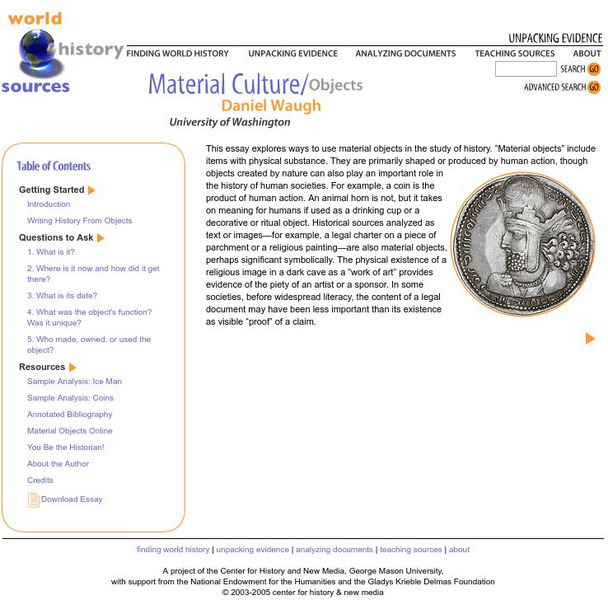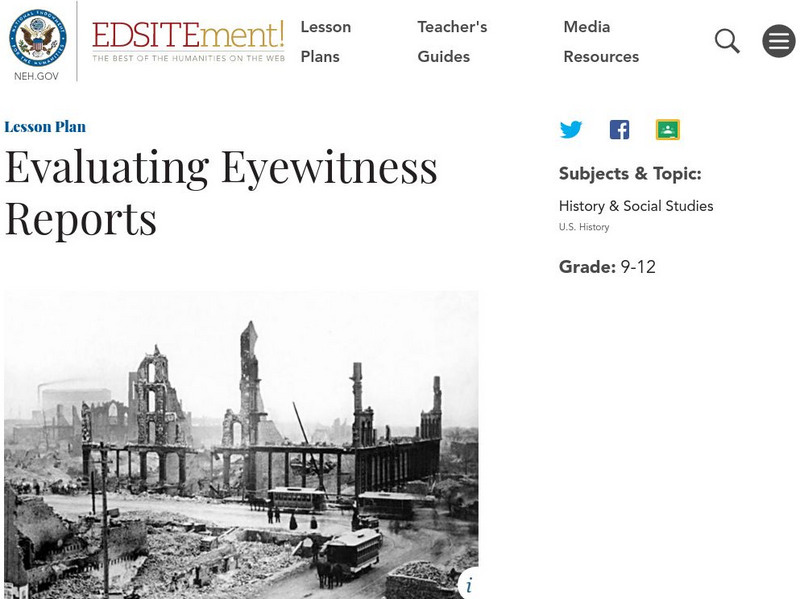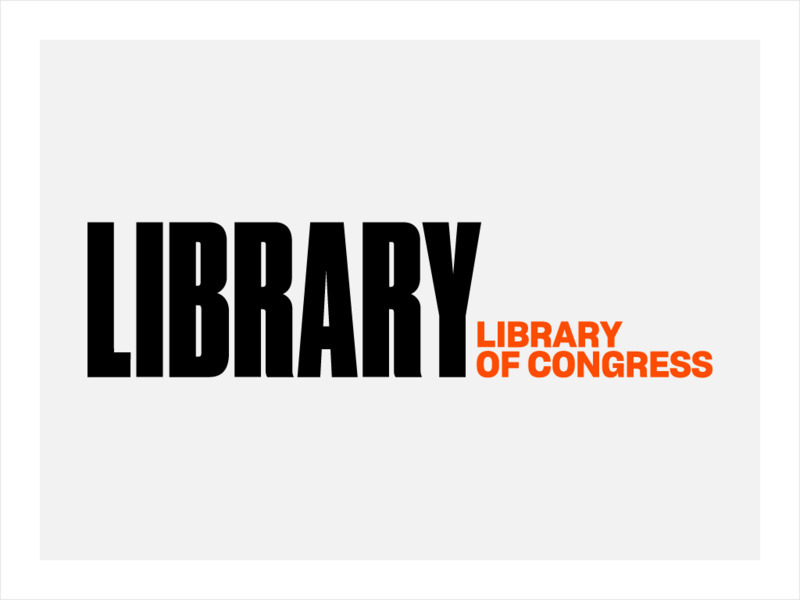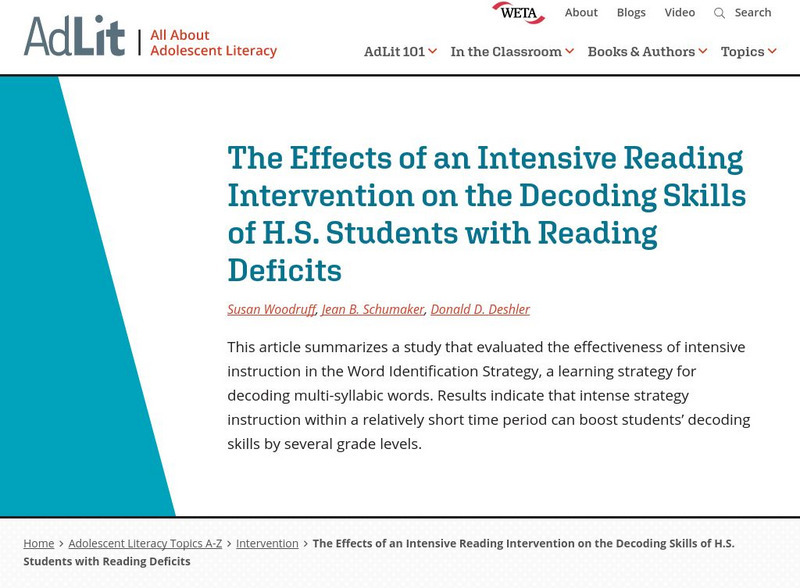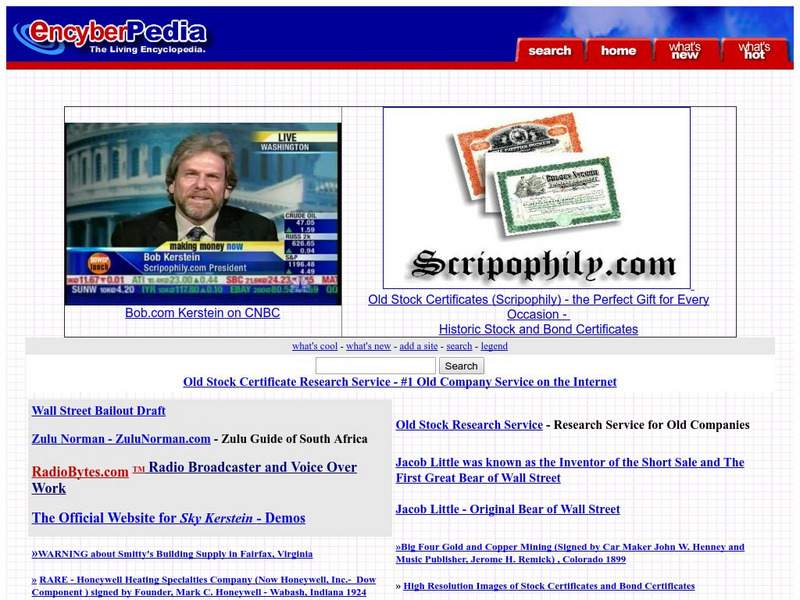PBS
Pbs Learning Media: News and Media Literacy Collection
This collection, which includes videos, blog articles, student handouts, lesson plans, and tip sheets for families, helps students identify, analyze, and investigate the news and information they get from online sources. Media literacy...
Arizona State University
Arizona State U.: Research Success for High School Students: Evaluating Sources
A collection of resources for evaluating sources. Topics covered include knowing your sources, assessing whether a source is scholarly, the CRAAP Test (includes chart, worksheet, and website evaluation sheet), and how to identify fake news.
Other
Harvest
Three modules explain what primary sources are; how to find primary sources in the UIUC archives; how to make sense of a primary source document by examining its creator, the context, and purpose of its creation.
George Mason University
George Mason University: World History Sources: Material Culture: Images
Investigate the meaning of different cultures' images and materials. Learn to examine different questions such as what is the image, what is the meaning, what is the function, and what is the social condition.
George Mason University
George Mason University: World History Sources: Material Culture: Objects
Examine different objects from many different cultures. Learn how to decipher what it is, where it came from, what the function is, and who made or owned the object.
George Mason University
George Mason University: World History Sources: Newspapers
Discover how historians use newspapers and learn about the development of the modern newspaper. Get answers to many questions about different newspapers.
George Mason University
George Mason University: World History Sources: Official Documents
A guide to dissecting official documents. Learn how to find the author of documents, the primary audience, and other important information.
Library of Congress
Loc: Primary Source Investigation
Choose from a list of photos from the Civil War, Reform, Harlem Renaissance, and Campaign to study and record observations.
George Mason University
Chnm: Children & Youth History
"Children & Youth in History is a world history resource that provides teachers and students with access to sources about young people from the past to the present."
National Endowment for the Humanities
Neh: Edsit Ement: Evaluating Eyewitness Reports
In this lesson, students practice working with primary documents by comparing accounts of the Chicago Fire and testing the credibility of a Civil War diary.
Library of Congress
Loc: Creating a Primary Source Archive: All History Is Local
A lesson plan where young scholars collect local primary documents and examine the interplay between national, state, local, and personal history.
Digital History
Digital History: An Intro to the Study of History: The Four Questions [Pdf]
How does one study history? Find four basic questions that historians use to examine events in an effort to explain them and put them in historical context. By examining the Battle of Lexington and Concord, students can practice using...
Library of Congress
Loc: Oral History and Social History
This lesson presents social history content and topics through the voices of ordinary people. It draws on primary sources from the collection, American Life Histories: Manuscripts from the Federal Writers' Project, 1936-1940.
Library of Congress
Loc: Change in Early 20th Century America: Doing the Decades
This unit provides a flexible investigative structure for the study of selected themes in U.S. history and culture using the American Memory collections and related resources. Core goals are the development of relationships between...
AdLit
Ad lit.org: Effects of Intensive Reading Intervention of Decoding Skills
This article summarizes a study that evaluated the effectiveness of intensive instruction in the Word Identification Strategy, a learning strategy for decoding multi-syllabic words. Results indicate that intense strategy instruction...
US National Archives
Nara: History in the Raw
Site offers excellent reasons to approach history by using primary documents -- diaries, letters, drawings, and memoirs. Also gives teachers suggestions on where to find great sources.
Cynthia J. O'Hora
Mrs. O's House: History Facts and Fictions
There are many versions of historical events, people, and places. This PBL offers an opportunity to students to actively explore a disputed event or urban myth to decide which version they will argue in favor of with supporting evidence.
Cynthia J. O'Hora
Mrs. O's House: Mystery Object Challenge
With a brief story and photo of an image, students will do some digging to figure out how old the object pictured is and the history behind it.
Gilder Lehrman Institute of American History
Gilder Lehrman Institute: History Now: When the Past Speaks to the Present: Thomas Jefferson,sally Hemings
[Free Registration/Login Required] An article about the need for careful interpretation of historical sources, especially in the area of slavery.
US National Archives
National Archives: Was Reconstruction a Revolution?
Students will use primary sources to answer the question "Was Reconstruction a Revolution?". Included are discussion questions, worksheets, primary sources, extension activities, and additional resources. [PDF]
Other
Encyber Pedia
An encyclopedia online. Just look for your topic to find information that you need. Provides information on a wide range of topics.
Other
Speech, Music and Hearing: Historical Linguistics
A brief definition of the term historical linguistics and its sub-disciplines. This site is a good starting point for studying and comparing languages
Grammarly
Grammarly Handbook: Headings
This page focuses on the use of headings in a paper. The layout of the headings and subheadings should be determined before beginning the paper to make it easier to read and more attractive. Most important is to be consistent with...
Grammarly
Grammarly Handbook: The End
A list of text requirements that may be necessary after the conclusion of a research paper.





